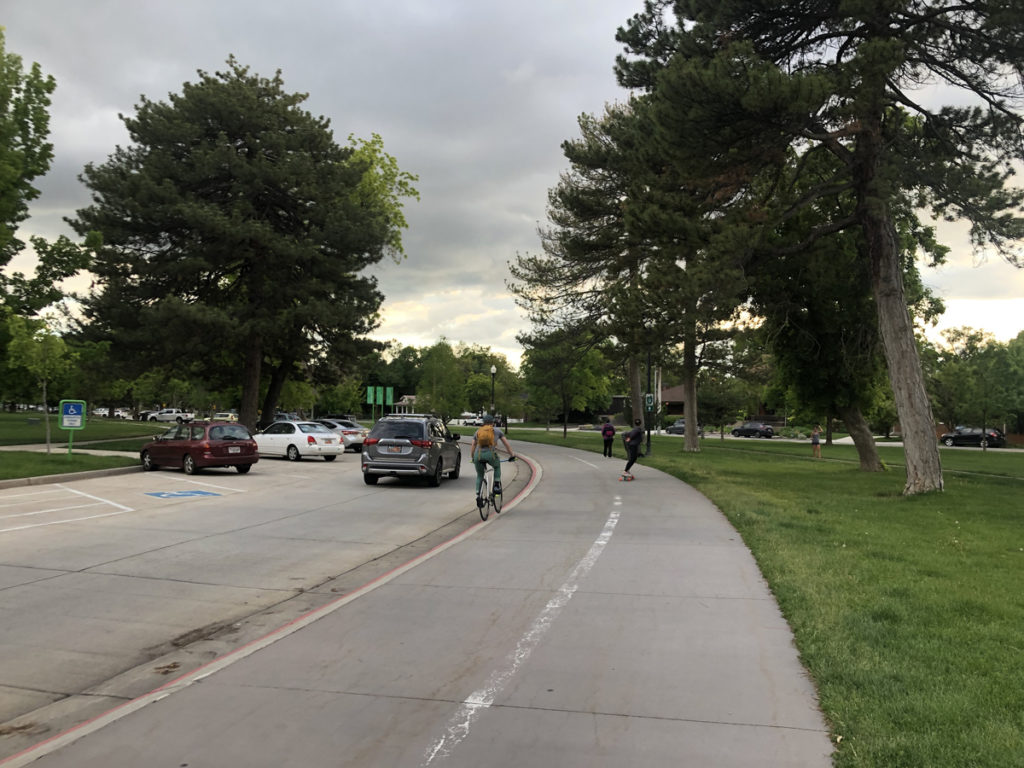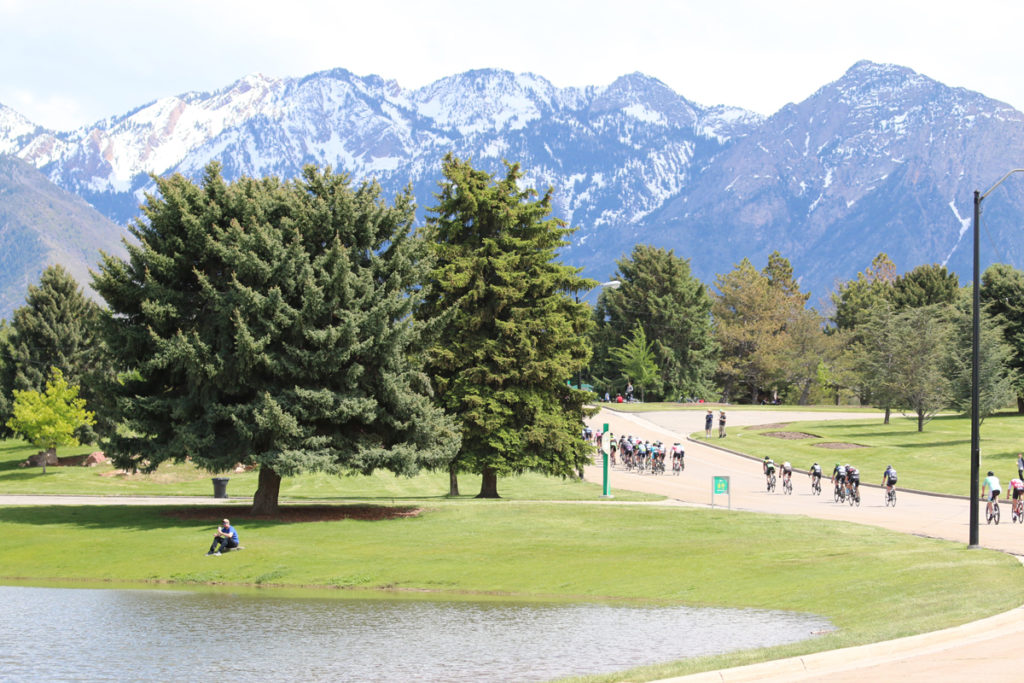Salt Lake City has two incredible parks within the city – Sugarhouse Park and Liberty Park. We propose that for two weekend days each month, alternating every two weeks, each park would be car free. Both currently have approximately 1.25 mile loop roads going through the park that are open to automobile traffic almost every single day of the year. One exception is that the Sugarhouse Criterium takes place without cars on the road for one day a year. Historically, bike races have been held in Sugarhouse Park for decades. The same may be true for running events in each park. Aside from these few days, both parks always have cars on the road.

A car free park would give families, people on bikes, runners, pets, sledders, walkers, and other people who enjoy the park, a chance to experience the park without cars. While each currently has a bike and running path around the each park, the opportunity to enjoy the outdoors without incursion by automobiles would provide a chance for greater serenity within the city. If each park were car free two days a month, there would be an opportunity to enjoy a car free park one day each week within Salt Lake City.
Some key parks in other cities have done so. Golden Gate Park in San Francisco has car free sections of road every Sunday, Monday holidays, and summer Saturdays. People come out in droves to enjoy the roadway without cars.
Central Park in New York City is now car-free capping an effort that appears to have begun in 1991.
This could happen right away with little effort or planning by Salt Lake City. However, some improvements to infrastructure would help the process. Both parks need safe, non-auto ways to get to the park. Better bike lanes to and from each park would help greatly. Each has a couple of good routes currently. Liberty Park can be accessed by the 600 E. neighborhood byway. Sugarhouse Park by the PRATT Trail as well as 1500 E. needs better access. For Sugarhouse Park, adding bike lanes on 2100 South would help to make it safer to access the park from the north, south, and east.
This will take political will from the Mayor, especially to reverse the decision to not put bike lanes on 2100 S between 1700 E and 2300 E. For Liberty Park, hopefully the 9-Line Trail will result in bike lanes on 900 S that will make park access easier, and on 500 E too.
Additionally, there are few bike racks in either park – installing more would provide a safe place to lock up personal transporation while enjoying the parks.
From what we hear, there is a Greenbike station planned for Liberty Park at some point. We have not heard anything regarding a station at Sugarhouse Park. This would help to improve accessibility to the park, and recreation within the park.
Both parks suffer from some huge barriers to pedestrian access in certain places. By Liberty Park, there is no crosswalk between 900 S and 1300 S on 700 E for example. By Sugarhouse Park, the southwest corner is a pedestrian nightmare for those wanting to walk to the park from the neighborhoods south of I-80. Scary crossings of freeway exits and entrances, and a too narrow bridge lurk to make park access difficult.
Both parks are readily accessible by UTA bus.
All of these should be remedied soon, but are not necessary to implement car free parks.
Salt Lake City should start this summer by making Sugarhouse Park and Liberty Park car free for two days a month every other week.










A car free park is a GREAT idea. This puts Salt Lake up with the big cities of the world who know the importance of healthy environments and safety for their populations who know how to get out of their cars.
Perhaps a better approach would be alternate weekend days to try it out. Even that would have problems such as issues of where people driving to the park can park. You cant have them on 2100 south or 1300 East. Large group picnic reservations on the south side especially problematic – how would people get there with food and kids? The current system has not caused problems, cars go slowly and the park is well used and appreciated.
Honestly I don’t know that I see what the issue is. For example just this morning I did an 11 lap / 44 min training ride in Sugarhouse Park, and I didn’t have any problems at all, other than that on 3 of the 11 laps I had to slow at that pinch point at the north end of the park where the gate pushes foot traffic into the bike lane and walkers/strollers went through there without looking behind them to check for an approaching bike, the 5-7 times I had to slow and swerve because people on foot either crossed the bike lane without looking behind them for bikes first or were standing still in the bike lane while having a conversation, the 2 times I had to lock up my brakes to avoid ramming into the side of a motor vehicle moving in or out of a parking lot without noticing I was coming, and the 1 time I had to slow down because someone had an off-leash dog that they were letting randomly amble across the various lanes of the roadway. What could there be to complain about? [NOTE: this is not satire (or not entirely anyway). The numbers aren’t exaggerated; they’re a good-faith accounting of the conflicts I had to deal with in a single ride today, at 10am on a workday.]
I lived in NYC for four years, and the beauty of Central Park is that I could walk two minutes from my apartment, get onto the subway system, and then walk maybe five minutes from the subway to the park. And, if I didn’t want to take the long train ride all the way to Central Park, there were two other big, beautiful parks in my neighborhood. That’s not the reality for many park users here in Salt Lake.
Liberty Park and Sugarhouse Park are actually not very transit accessible for people who don’t live on a direct bus line. Have you tried to ride public transit for an significant distance in the valley? What about transferring across multiple bus lines, or from bus to train and back again, with kids and picnic gear in tow? Liberty Park is more than just a neighborhood park. It sees visitors from all over the valley—particularly the west side. We have a lot more work to do on public transit infrastructure before we can make these parks car-free.
It seems that the problem is access to the parks, not safety within the parks. Therefore, why don’t we advocate for car-free routes to the parks, rather than within the parks. Why not close 2100 S for one day per month? Or at least a few hours per month? Something like that would make a much bigger difference in how safe people feel than to remove cars from a place where people already feel safe, for the most part.
Comments are closed.